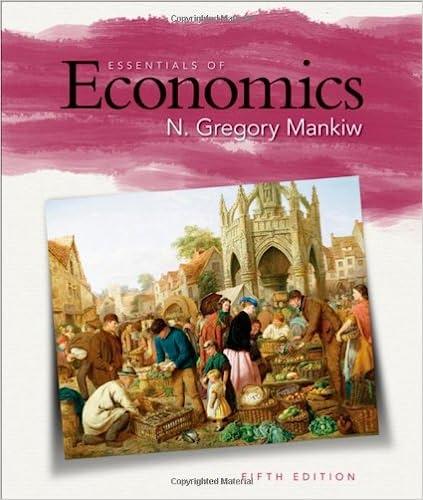This is a Macroeconomics question.
1.1 An innitely lived household (40 points) Consider a representative household who maximizes her lifetime utility (as in class): 00 max 'U(ct, ll) 0 (Ct ,Nft ,Bilgio t Where l, + N: = 1. Imagine that the household can now trade shares of the representative rm and corporate bonds (that is, the HH can save and, through her savings, can nance the representative rm either through equity and/or debt. As some of you might know, the mix of equity and debt is known as capital structure). Also, for simplicity imagine there is no taxation and there is no government. The budget constraint of the household is: Outow ct-l- pe-S, + l-B; New investment in shares that today cost pg an invnslmenl in Hnmlx at [)er l s (P; + (10521 + (1 + Ti} 'B:1 + Wt ' Ne ~Wd \\_',_4 W4 our shares values+dividend Bond repayment Wm. mm\" ,m ,, Labor income Inow Wherept is the price of the shares at time t. S, is the amount of shares purchased in the current period, 119 is the dividend currently distributed by the rm, S_1 is the amount of shares the HH bought yesterday and BL, is the amount of bonds the HH bought yesterday. In addition to labor supply and consumption the household chooses the amount of shares St and the amount of bonds Bf. As usual, rewrite the budget constraint bringing all terms on one side: BC: (p+dt)Se1+(1+T1)'B:_1+wi'NfCp~SB: =0 1. ( 0 points) Form the Lagrangian. Recall that now you have a budget con- s raint at every point in time t. Recall from lecture notes that now you need a Lagrange multiplier A, at every point in time t. [Hinti] It should look like L agrangian = 220 [it [U(C,l) + A; - (BC)] (see examples in lecture notes). 2. ( 0 points) Calculate the F005 with respect to 0,. It, St, E: [Hint]: the F005 for 6,, and l, are identical to the ones in class (check slide 10 lecture 7). The FOC for B: is identical to the one we calculated in class for savings(in fact, tie HH is essentially savings through bonds). You can derive the FCC with respect to St following identical steps to the one for B: (check intermediate 3 ep in slide 10 lecture 7). Do not get confused: S, in the problem set represents the rm's shares and, in the lecture note, it represents savings, 3. ( 0 points) Use the FOG with respect to consumption to get rid of At, sub- s ituting it out in the other three conditions. Rewrite the remaining three conditions without [\\l and interpret them, 4. ( 0 points) Combine the B, and S, first order conditions. [Hintz | you should get that the return on bonds 1+ n+1 is equal to the return of the shares, where the return of the shares is dened as W. Show all steps that lead you to this result. Why do you think you got this condition? This condition essentially says that, from the point of View of the HH, bonds and shares are perfect substitute and, therefore, the HH demands identical returns. Recall that there is no risk in this mode]. In the real world, equities are considerable riskier than bonds. Discuss. From Wikipedia: \"The ModiglianiMiller theorem is an inuential element of economic theory, it forms the basis for modern thinking on capital structure. The basic theorem states that in the absence of taxes, bankruptcy costs, agency costs, and asymmetric information, and in an efcient market, the value of a rm is unaifccted by how that rm is nanced. Since the value of the rm depends neither on its dividend policy nor its decision to raise capital by issuing stock or selling debt, the. ModiglianiMiller theorem is often called the capital structure irrelevance principle. The key Modigliani-Miller theorem was developed in a world without taxes. However, if we move to a world where there are taxes, when the interest on debt is tax-deductible, and ignoring other frictions, the value of the company increases in proportion to the amount of debt used. The additional value equals the total discounted value of future taxes saved by issuing debt instead of equity. Modigliani was awarded the 1985 Nobel Prize in Economics for this and other contributions." Is the representative firm really indifferent between bonds and shares as a source of nancing? Let's take a look at the representative rm's problem and let's inves- tigate more







